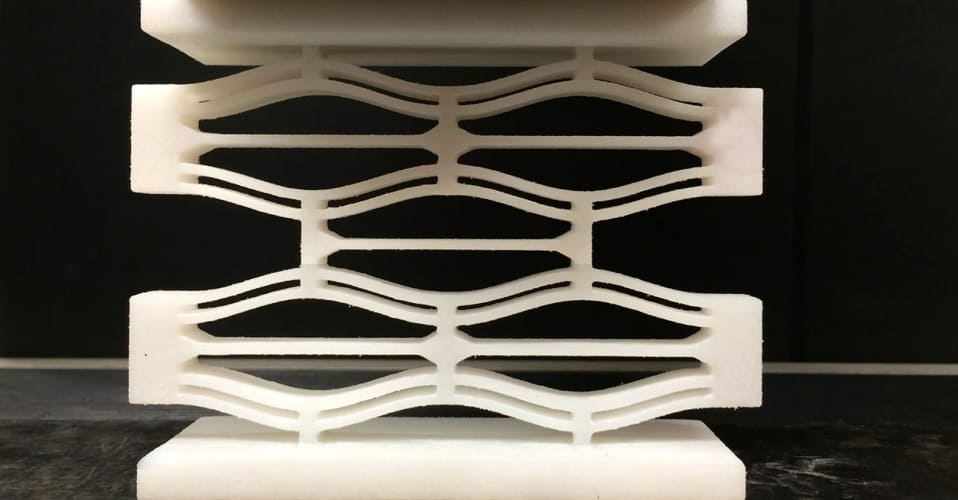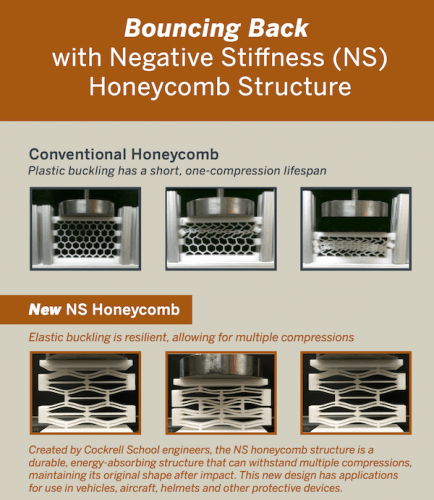Unlike traditional honeycomb structures, the negative stiffness (NS) honeycombs have been engineered to provide protection from repeated impacts, returning to their original structure following compression. According to its inventors, the technology could have multiple applications, including vehicle safety, sport and military helmets, and aviation.

“Whether you’re serving our country in uniform, playing in a big game, or just driving or biking to work, the potential for multiple collisions or impacts over time — however big or small — is a reality,” said mechanical engineering professor Carolyn Conner Seepersad from the University of Texas.
“We believe that this technology, when constructed in future helmets and bumpers, could reduce or even prevent many of the blunt-force injuries we see today.”
The team’s research, published online in Integrated Materials and Manufacturing Innovation, shows a cell geometry capable of elastic buckling, giving NS honeycomb structures the ability to recover their energy-absorbing shape and properties after impact.
Cells can be formatted in a variety of sizes and materials. The current lab prototype is made up of 3.5-inch honeycomb structures with a force threshold of 200 Newtons, which the researchers claim is enough to absorb the energy of a baseball travelling at 100mph in 0.03 seconds.
Miniature NS honeycomb structures have also been developed from nylon using selective laser sintering for experimentation. Customised compression and drop tests have confirmed the NS honeycomb structures’ predicted energy-absorbing behaviour, according to the team.
The next stage of assessment will include ballistic testing, while a combat helmet prototype is expected to be completed later in the year.


Project to investigate hybrid approach to titanium manufacturing
What is this a hybrid of? Superplastic forming tends to be performed slowly as otherwise the behaviour is the hot creep that typifies hot...